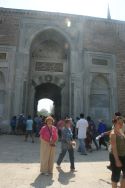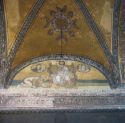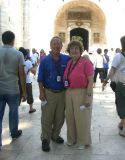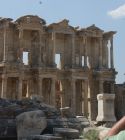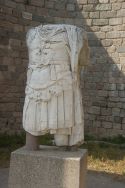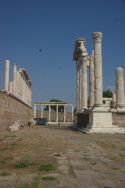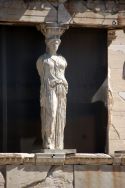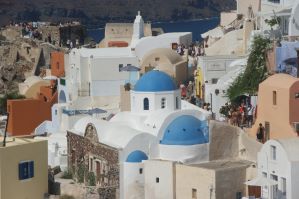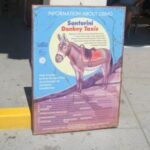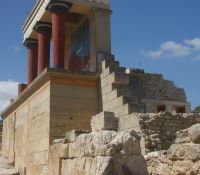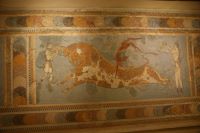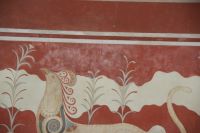August 8, 2011
You know I like to see as much as possible when I am somewhere, so I think you can understand my challenge here in Rome when I describe it for you: it’s as though every Chinese capital I’ve been to was all in one place—Beijing, Xian, Soochow, Hangzhou, Nanjing, Anyang (actually haven’t been there yet), Kaifeng, Luoyang, etc., and that most of what was there remained (sometimes recycled, as in a Buddhist temple becoming a church, or a small palace becoming a temple). That’s my impression of Rome—overwhelming. For about 500 years, it dominated Western Europe, borrowing a lot of Greek ideas, including religion and architecture; and for about 2000 years it has been the center of Christianity (since the Reformation of Catholicism). It’s the center of Empire I thought I’d see in Athens, but didn’t.
Here’s how I tried to master—or perhaps experience is a better word—as much as I could.
Tours. Carolyn and I did four tours with guides. When we got in Saturday, we took the on-off bus tour, which we’ve found the ideal introduction to a new city. Turns out, the ancient walls (circa 3rd century A.D) enclose a small city—around 16 kilometers, and most of the sites are in that area. As you’ll see though, most streets were too narrow for buses, but the trip did hit the highlights—the major plazas and palaces, skirting ancient Rome and the Vatican City.

 Two of our tours were of the ancient world. One was of the Appian Way, which got us out of the ancient city into the early Christian catacombs. The other was a walking tour I did of the three major areas of the Palatine Hill, one of the seven hills on which Rome was built. It was the center of the religion and politics, including what’s left of the palaces (the marble is mostly gone—much of it adorning churches, some of them in the ancient city of Rome; Constantine’s conversion around 325 ensured the churches would start taking precedence over the temples), including the ones of the first emperor, Augustus, and the remnants of the huge additions Nero did; the Forum, where in the republic senators debated issues of the day (bailout anyone?); the supposed home of Romulus and Remus, the founders of ancient Rome, the pyre on which was burned Julius Cesar, ending the
Two of our tours were of the ancient world. One was of the Appian Way, which got us out of the ancient city into the early Christian catacombs. The other was a walking tour I did of the three major areas of the Palatine Hill, one of the seven hills on which Rome was built. It was the center of the religion and politics, including what’s left of the palaces (the marble is mostly gone—much of it adorning churches, some of them in the ancient city of Rome; Constantine’s conversion around 325 ensured the churches would start taking precedence over the temples), including the ones of the first emperor, Augustus, and the remnants of the huge additions Nero did; the Forum, where in the republic senators debated issues of the day (bailout anyone?); the supposed home of Romulus and Remus, the founders of ancient Rome, the pyre on which was burned Julius Cesar, ending the 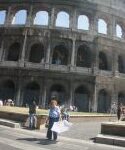 Republic; and above all, the Coliseum (which got its name from the Colossus of Nero, a huge statue that stood on top of the arena, a name it has given to other sports arenas over the years). To the cheers of 60000 Romans (including Victor Mature in my youth) gladiators fought each other, animals (they’ve been excavating the area under the stage which made possible a flow of activity), in the “sports” of the day. My favorite, though, has to be the arches of victory the
Republic; and above all, the Coliseum (which got its name from the Colossus of Nero, a huge statue that stood on top of the arena, a name it has given to other sports arenas over the years). To the cheers of 60000 Romans (including Victor Mature in my youth) gladiators fought each other, animals (they’ve been excavating the area under the stage which made possible a flow of activity), in the “sports” of the day. My favorite, though, has to be the arches of victory the 
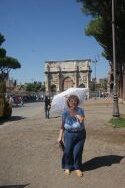 legions marched through during the reigns of Constantine and Trajan; the 50’s movies featured lots of the Romans tromping and triumphing, as they in fact did for centuries.
legions marched through during the reigns of Constantine and Trajan; the 50’s movies featured lots of the Romans tromping and triumphing, as they in fact did for centuries.
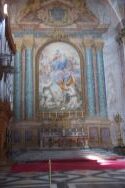
 The other tour was of the Vatican City, the smallest independent enclave in the world. The visit there almost required a tour to “jump the queue” since August is THE tourist month (Europe essentially closes) and Rome is a popular destination. I heard something like 3 million tourists, but that may have been just the crowd at the Vatican today. Three hours barely scratched the surface. We did a quick tour of some of the rooms of the Vatican museum, which as befits the history of the Papacy, has some of the greatest art in Western Civilization, including Michelangelo’s Pieta (would I love to wander in the entire museum!), the Sistine Chapel, where Michelangelo spent nine years painting the ceiling (and designing the uniforms of the Swiss Guard which protects the Pope) and the ‘last judgment” behind the altar, and Botticelli and other famous Renaissance artists covered the sides of the walls (no pictures allowed inside what is a private chapel of the Pope, built by Pope Sixtus, hence Sistine), and St. Peter’s Church, which is the largest Catholic church in the world (none are allowed to be bigger). Constructed over 300 years on the site of the burial of St Paul, it’s lavishly decorated, as you might imagine. The Popes can determine where they want to be buried (and many of the 200 plus are in St. Paul’s; the papacy was not always located in the Vatican City; for a time, the Popes were kept semi prisoners in Avignon France); some had lavish monuments, others were mummified, etc. At one time, the Pope had political as well as religious power—as late as the 17th century, for example, he was one of the instigators of a war after the Turkish siege of Vienna in 1683 that ended in 1699 with a treaty that began the slow decline of the Ottoman Empire (tying together parts of my trip!).
The other tour was of the Vatican City, the smallest independent enclave in the world. The visit there almost required a tour to “jump the queue” since August is THE tourist month (Europe essentially closes) and Rome is a popular destination. I heard something like 3 million tourists, but that may have been just the crowd at the Vatican today. Three hours barely scratched the surface. We did a quick tour of some of the rooms of the Vatican museum, which as befits the history of the Papacy, has some of the greatest art in Western Civilization, including Michelangelo’s Pieta (would I love to wander in the entire museum!), the Sistine Chapel, where Michelangelo spent nine years painting the ceiling (and designing the uniforms of the Swiss Guard which protects the Pope) and the ‘last judgment” behind the altar, and Botticelli and other famous Renaissance artists covered the sides of the walls (no pictures allowed inside what is a private chapel of the Pope, built by Pope Sixtus, hence Sistine), and St. Peter’s Church, which is the largest Catholic church in the world (none are allowed to be bigger). Constructed over 300 years on the site of the burial of St Paul, it’s lavishly decorated, as you might imagine. The Popes can determine where they want to be buried (and many of the 200 plus are in St. Paul’s; the papacy was not always located in the Vatican City; for a time, the Popes were kept semi prisoners in Avignon France); some had lavish monuments, others were mummified, etc. At one time, the Pope had political as well as religious power—as late as the 17th century, for example, he was one of the instigators of a war after the Turkish siege of Vienna in 1683 that ended in 1699 with a treaty that began the slow decline of the Ottoman Empire (tying together parts of my trip!).
 A personal highlight though was a function of the art deco boutique we are staying at—the Hotel Locarno. It’s famous for being the centerpiece of the movie, Hotel Locarno, which I do not know anyone has seen, but it’s charming for its 6 person cage elevator, rooftop restaurant—and the fact that it lends bicycles. In other words, it’s helped me see this manageable city by bicycle. The best time to see was Sunday morning; I was on the road at 7—and had the city essentially to myself (most Romans vanish during August; most tourists vanish in the morning), when it was almost cool enough to enjoy. I was especially interested in finding the Baroque masterpieces (can you imagine, the Romans brought back many obelisks from Egypt; one Baroque master put one on an elephant), but the small streets, many of them pedestrian malls, went all the places that the bus could not reach. I went two other times, including tonight, when I took most of the Baroque tour from Fodor’s; I hadn’t realized Rome was the ringleader in the Baroque, which was part of the counter reformation, the Catholic Church’s response to the rise of Protestantism in northern Europe—an over the top ostentatious glorification of God. I had to go back to the main Jesuit Church for a second look tonight. Though it’s a lot busier at 7 pm than 7 am, Rome is still a fascinating city to wander around, on foot or on bicycle.
A personal highlight though was a function of the art deco boutique we are staying at—the Hotel Locarno. It’s famous for being the centerpiece of the movie, Hotel Locarno, which I do not know anyone has seen, but it’s charming for its 6 person cage elevator, rooftop restaurant—and the fact that it lends bicycles. In other words, it’s helped me see this manageable city by bicycle. The best time to see was Sunday morning; I was on the road at 7—and had the city essentially to myself (most Romans vanish during August; most tourists vanish in the morning), when it was almost cool enough to enjoy. I was especially interested in finding the Baroque masterpieces (can you imagine, the Romans brought back many obelisks from Egypt; one Baroque master put one on an elephant), but the small streets, many of them pedestrian malls, went all the places that the bus could not reach. I went two other times, including tonight, when I took most of the Baroque tour from Fodor’s; I hadn’t realized Rome was the ringleader in the Baroque, which was part of the counter reformation, the Catholic Church’s response to the rise of Protestantism in northern Europe—an over the top ostentatious glorification of God. I had to go back to the main Jesuit Church for a second look tonight. Though it’s a lot busier at 7 pm than 7 am, Rome is still a fascinating city to wander around, on foot or on bicycle.
In 36 hours, our journey will be over, around 1200 digital pictures and 15 guidebooks richer. My favorite business story occurred in Istanbul, in the Grand Bazaar. The Bazaar, built in the 16th century, houses around 5000 shops, some selling the same trinkets (and knockoffs) you find in the Silk market in Beijing, some selling the high class merchandise you can find in the Pearl market in Beijing—and everything in between.
I tried bargaining using my Chinese skills. “How much for an Old Friend?” I asked. “We’re not old friends,” the grizzled shopkeeper replied, “ but if you buy this, we’ll be better friends in the future.” We’re now better friends.


